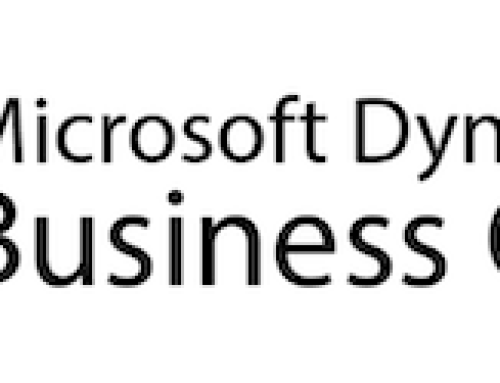You might assume that there would be few differences between Accounts Payable and Accounts Receivable in Acumatica versus the same procedures in Microsoft Dynamics GP. But while it is true that both systems have the same functionality, Acumatica is so much more robust.
In this series: “Advantages of Acumatica versus Dynamics GP,” we have looked at Core Financials System-Wide Features and Generic Inquiry vs. SmartList and General Ledger. Now I’ll give some specific examples of why I prefer Accounts Payable and Accounts Receivable in Acumatica.
Accounts Payable
Accounts payable in Acumatica has all the same basic functionality that you would expect in any ERP system, including Dynamics GP. But Acumatica comes with more.
Building check runs
Building check runs in Dynamics GP can be very slow. I have worked with some Dynamics GP clients whose bill-check run can take hours. Acumatica does it within a minute, maybe even just a few seconds, depending on the size of your company. Acumatica users will see a vast improvement in speed when it comes to building check runs.
Expense Reclassification mode
In Acumatica accounts payable, there is an expense reclassification mode that can be enabled or disabled. It allows your accounts payable clerk to go ahead and enter bills, even if they don’t know the account coding for that bill. Then someone else can reclassify those at a later date after they’ve been released. This takes the liability off the accounts payable clerk to make sure they get the coding right. It also doesn’t hold up the accounts payable clerk from getting those bills into the system if they don’t know the account coding. This is a nice feature in Acumatica that is not an option in Dynamics GP.
Batching
Dynamics GP offers batching, although it is optional, while Acumatica has chosen not to include batching. We find that this is an advantage for some companies as they are used to a simpler approach, and asking users to grasp complicated batching concepts can present a challenge.
If a company prefers batching, there are reports in Acumatica that will group all the transactions together like a batch. Then you can review and approve and do what you typically would do in Dynamics GP before releasing those batches.
Transactional Copy Function
In Acumatica, when you are on any of the transactional screens in accounts payable, you can call up a previous transaction, and with a click of a button, you can copy and paste to start a new record. It will immediately paste that prior transaction into a new transaction window, eliminating any manual reentry. This feature is not available in Dynamics GP.
Transactional templates
With Acumatica, if you don’t want to use the copy function, you can set up templates for vendors for certain transactions. Again, it is just one click to pull that template, and your AP transaction will be fully populated for you. This is not available in Dynamics GP.
Recurring Transactions and Payment Terms
Acumatica and Dynamics GP both allow recurring transactions. While this functionality in Dynamics GP is quite limited, in Acumatica, it is robust. The same applies to payment terms. Obviously, both systems have payment terms, but Acumatica is much more robust in the configuration that it allows in this area. You can set up payment terms where you might need to set up schedules. Perhaps you’re paying just a portion of an invoice initially, and you want to break that invoice up into three payments. Acumatica allows you to set up that payment term automatically.
User Adoption
Because Acumatica is built on new technology, the screens and the data processing are much more intuitive than they are in Dynamics GP. When it comes to training, we find that new users can acclimate to Acumatica much faster than they can to Dynamics GP.
Communication
There are email communication options in accounts payable, on your transactional forms and your vendor forms. You have a history of all your communication when it comes to accounts payable. The out of the box reporting in Acumatica’s generic inquiries is much richer than in Dynamics GP. Acumatica does everything that Dynamics GP does, but it also does a lot more.
Accounts Receivable
AR in Acumatica has all the same basic functionalities that you would see in Dynamics GP, but it also has some additional features that are very helpful to users.
Apply payments to line items
In Dynamics GP, when you apply payments to your invoices, you specify the invoice that you want to pay, not a particular item or product on the invoice. When you apply a payment in Acumatica, you can get down into the invoice line detail rather than just the summary of the invoice. We’ve had that question come up a lot over the years when Dynamics GP users wanted to apply a payment to only a particular item within an invoice. Acumatica allows for that.
Overdue Charges
Dynamics GP does finance charges. Acumatica calls it overdue charge processing, and once again, there are many more options available. For example, Acumatica can calculate late charges based on whatever is open at the end of the month. But it can go a step further and actually go back and look at the activity for that period and apply logic. Perhaps an invoice is not open at the end of the month, it was paid earlier in the month, but it was past due when it was paid. Acumatica has intelligence built in to assess a finance charge for the number of days it was past due before it was paid.
Processing Statements
AR statements and configuration in Dynamics GP are pretty standard. Acumatica has a much more robust feature set for processing statements. The AR screens and processes in Acumatica are much more intuitive than in Dynamics GP because it is built on a modern platform, using today’s advanced technology.
Just as in Accounts Payable
- Just as in AP, batching is not available, but again, that is not necessarily a bad thing. It is a much simpler approach that is easier for users.
- As I indicated in AP, there is a lot of out of the box reporting available that allows you to audit, and to approve transactions by user before releasing them.
- The Acumatica accounts receivable module also has that copy functionality we talked about in AP, where you can pull up any transaction, copy, and start a new transaction.
- The same is true with transactional templates. You can have specific templates built for customers that have the same type of transactions over and over again. Templates reduce the level of manual entry.
- Recurring transactions have a much more robust feature set. It allows you to configure your recurring transactions and offers a lot more flexibility regarding the timing of when those transactions occur.
- There are email communication options at both the customer and the AR transactional level. I think this level of communication is even more important in AR than it is on AP side. When it comes to customers, many times, we are dealing with past due invoices that someone has to take action on. Acumatica allows you to track all previous communications with your customers. Activities, mentioned in the system-wide feature comparison, lets you record all those conversations.
- The out-of-the-box reporting and inquiry for AR and AP are so complete that we haven’t needed to customize or add reports.
Since we use Acumatica to run our own business, we use the Accounts Payable and Accounts Receivable functions often, and even the small differences in Acumatica versus Dynamics GP stand out to us.
If you would like to compare the differences between Acumatica and Microsoft Dynamics GP for your own business, CAL Business Solutions can help.
Let’s start the conversation. Contact us online, call 860-485-0910 x4 or sales@calszone.com.
By Stacey Poll, Senior Implementation/Training Advisor, CAL Business Solutions, Acumatica and Microsoft Dynamics GP Partner, www.calszone.com

















